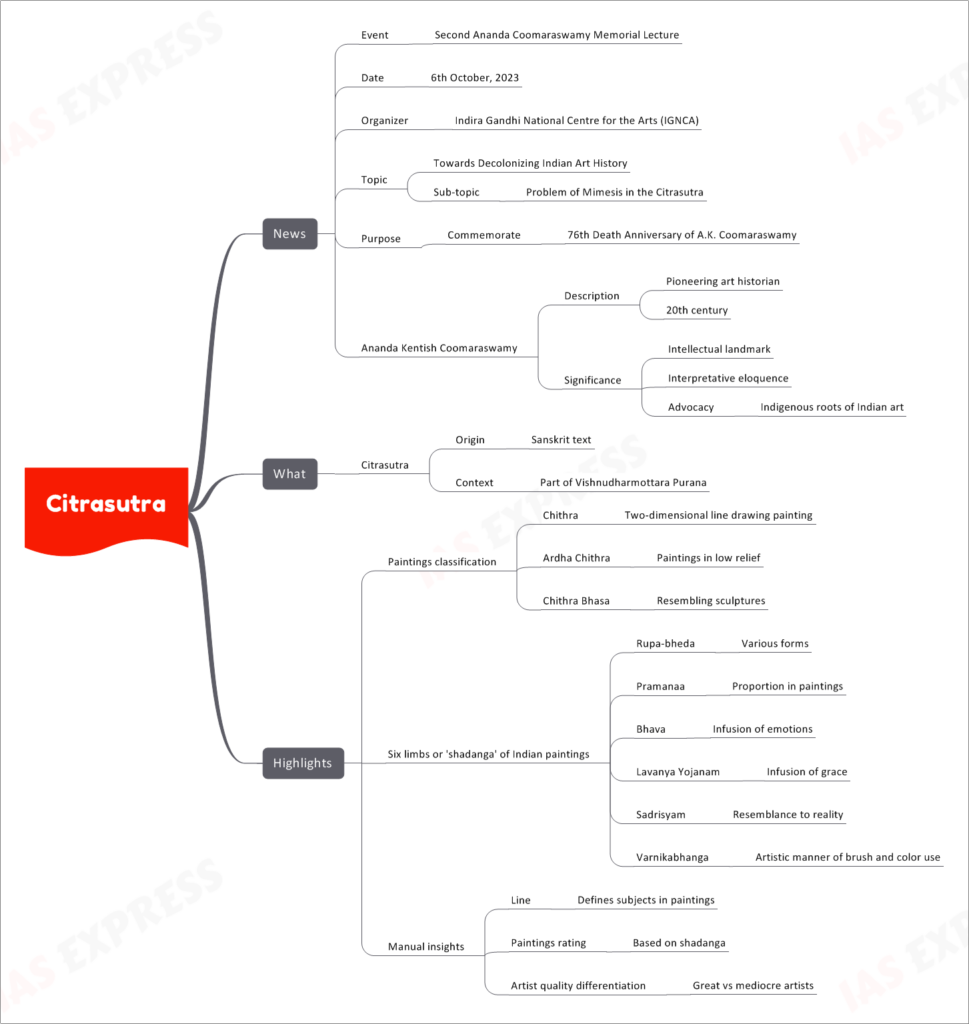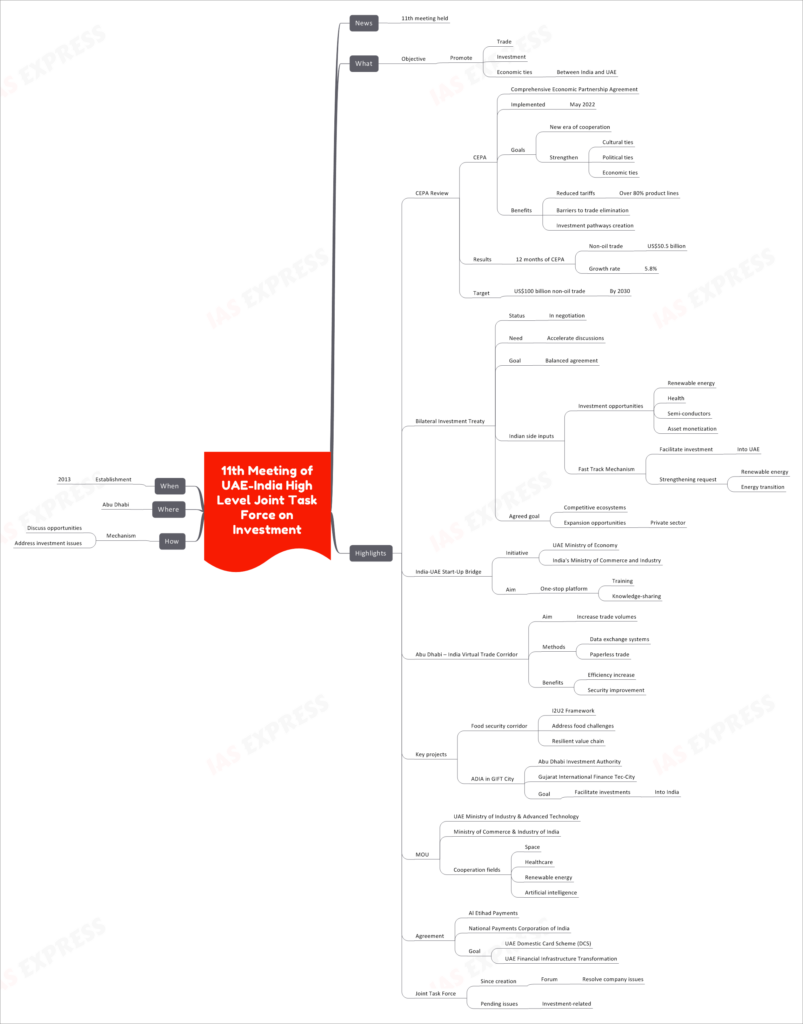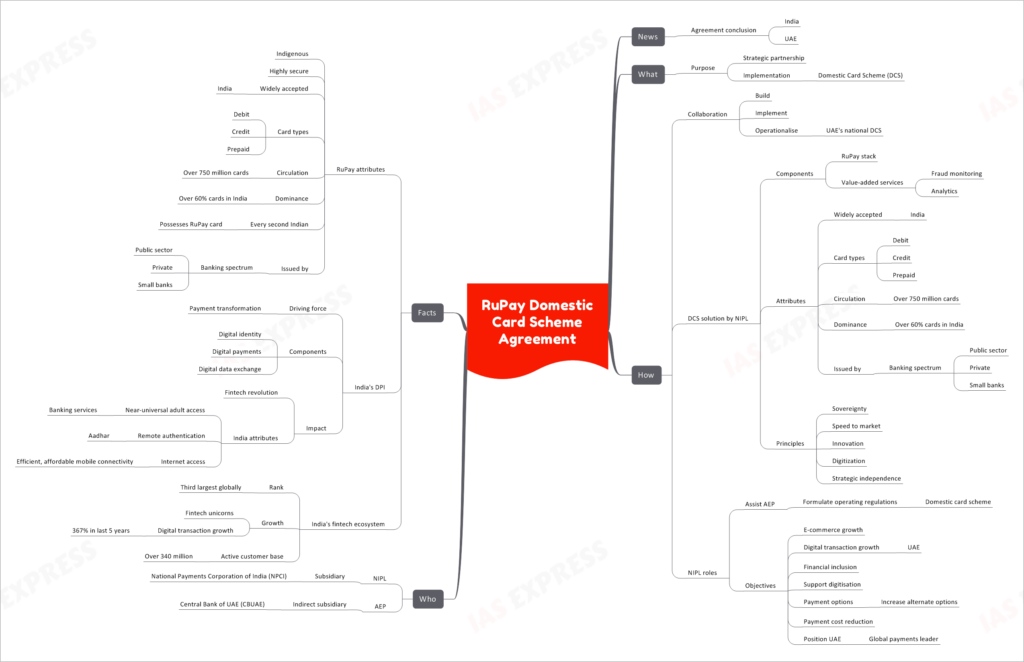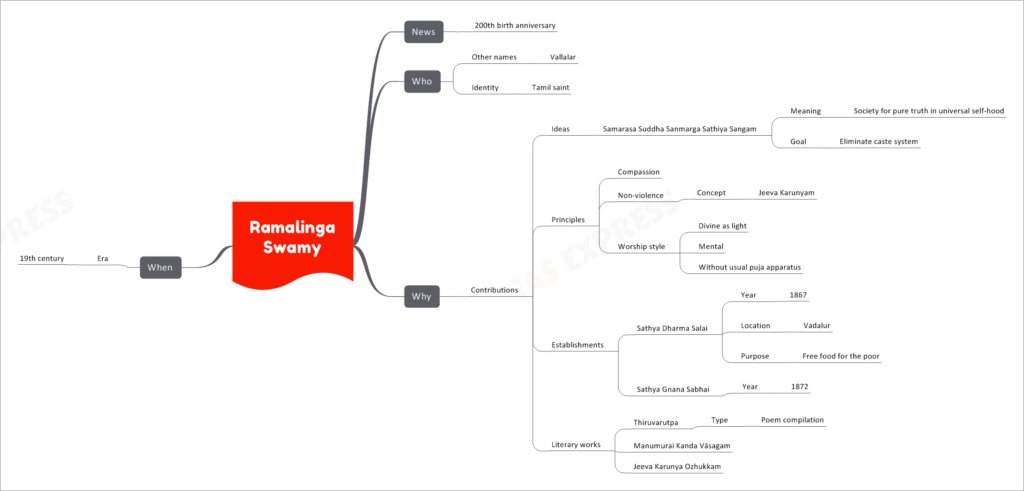[Newsbits] 05.10.2023

BlueWalker 3
The BlueWalker 3 satellite has recently made headlines due to concerns regarding its interference with astronomical studies.
BlueWalker 3: Unveiling the Satellite
Identity
BlueWalker 3 is a satellite designed primarily for cellular broadband communication.
Purpose
The primary purpose of BlueWalker 3 is to serve as a test satellite, experimenting with new technologies and capabilities.
Features
Size
- It boasts an extensive size, covering an area of 693 square feet.
- Notably, its reflectivity is a significant concern, as larger objects reflect more sunlight back to Earth.
Function
- BlueWalker 3 features a phased-array antenna capable of generating power from space.
- Its primary function is to deliver cellular broadband directly to mobile phones, potentially revolutionizing communication capabilities.
Significance
Brightness
- The satellite's brightness is comparable to some of the brightest stars in the sky, including those in the Canis Minor and Eridanus constellations.
Problem
- Astronomers have raised concerns about BlueWalker 3's brightness, as it poses difficulties for their observations.
- Ground-based telescopes are particularly affected, hindering their ability to observe the night sky effectively.
BlueWalker 3: Launch and Impact
Launch Date
BlueWalker 3 was launched on September 10, 2022, marking its entry into Earth's orbit.
Facts
Satellite Launch Trend
- BlueWalker 3 is part of a larger trend, with 16 other companies also filing intent with the Federal Communications Commission (FCC) in the United States to launch satellite constellations.
- The cumulative plan across these companies involves launching over 400,000 satellites into space.
Expected Impact
- The proliferation of satellites like BlueWalker 3 could significantly alter the appearance of the night sky, affecting the visibility of celestial objects and potentially disrupting astronomical research and observations.
Citrasutra
On October 6th, 2023, the Indira Gandhi National Centre for the Arts (IGNCA) organized the Second Ananda Coomaraswamy Memorial Lecture, an event aimed at commemorating the 76th Death Anniversary of A.K. Coomaraswamy. The lecture delved into the topic of "Towards Decolonizing Indian Art History," with a particular focus on the "Problem of Mimesis in the Citrasutra."
Ananda Kentish Coomaraswamy
Description
Ananda Kentish Coomaraswamy was a pioneering art historian of the 20th century known for his intellectual landmark contributions to the field. His interpretative eloquence and advocacy for recognizing the indigenous roots of Indian art have left an indelible mark on art history.
Significance
Coomaraswamy's work represents an intellectual landmark in art history, characterized by his deep understanding and interpretative prowess. He played a pivotal role in advocating for the recognition of the indigenous roots of Indian art, challenging colonial narratives.
The Citrasutra
Origin
The Citrasutra is a Sanskrit text that holds great significance in the realm of Indian art history.
Context
This text is a part of the Vishnudharmottara Purana, a sacred Indian scripture that encompasses various aspects of art, culture, and religion.
Highlights of the Citrasutra
Paintings Classification
The Citrasutra classifies paintings into three categories:
- Chithra: Two-dimensional line drawing paintings.
- Ardha Chithra: Paintings in low relief.
- Chithra Bhasa: Paintings that resemble sculptures, blurring the lines between two-dimensional and three-dimensional art.
Six Limbs or 'Shadanga' of Indian Paintings
The Citrasutra outlines the six essential elements that constitute Indian paintings:
- Rupa-bheda: Depicting various forms.
- Pramanaa: Ensuring proportion in paintings.
- Bhava: Infusing emotions into the artwork.
- Lavanya Yojanam: Adding grace and elegance to the depiction.
- Sadrisyam: Achieving a semblance to reality.
- Varnikabhanga: Mastering the artistic manner of brushwork and color use.
Manual Insights
The Citrasutra provides valuable insights into the art of painting:
- Line: The use of lines to define subjects and elements within paintings.
- Paintings Rating: A system for rating paintings based on the successful incorporation of the 'shadanga.'
- Artist Quality Differentiation: It distinguishes between great and mediocre artists based on their mastery of these principles.
11th Meeting of UAE-India High Level Joint Task Force on Investments
The 11th meeting of the UAE-India High-Level Joint Task Force on Investments has recently been held in Abu Dhabi.
Meeting Objectives
Objective
The primary objective of this meeting is to foster stronger economic relations between India and the UAE by promoting trade and investment.
Meeting Highlights
CEPA Review (Comprehensive Economic Partnership Agreement)
- Implementation: CEPA was implemented in May 2022.
- Goals: CEPA aims to usher in a new era of cooperation, strengthen cultural, political, and economic ties, and facilitate trade and investment.
- Benefits: It has led to reduced tariffs on over 80% of product lines, eliminated trade barriers, and created pathways for investment.
- Results: Within 12 months of CEPA, non-oil trade reached US$50.5 billion, growing at a rate of 5.8%. The target is to achieve US$100 billion in non-oil trade by 2030.
Bilateral Investment Treaty
- Status: Negotiations are ongoing.
- Need: There is a need to accelerate discussions.
- Goal: The goal is to establish a balanced agreement.
- Indian Side Inputs: India has highlighted investment opportunities in renewable energy, health, semi-conductors, and asset monetization. The Fast Track Mechanism aims to facilitate investment into the UAE, with a focus on renewable energy and energy transition.
- Agreed Goal: Both parties aim to create competitive ecosystems and expand opportunities for the private sector.
India-UAE Start-Up Bridge
- Initiative: A joint effort by the UAE Ministry of Economy and India's Ministry of Commerce and Industry.
- Aim: This initiative seeks to establish a one-stop platform for training and knowledge-sharing among startups.
Abu Dhabi – India Virtual Trade Corridor
- Aim: The corridor aims to increase trade volumes through data exchange systems and paperless trade, enhancing efficiency and security.
Key Projects
- Food Security Corridor: The I2U2 Framework addresses food challenges and aims to create a resilient value chain.
- ADIA in GIFT City (Abu Dhabi Investment Authority): This project aims to facilitate investments into India, particularly in Gujarat International Finance Tec-City.
MOU (Memorandum of Understanding)
- An MOU was signed between the UAE Ministry of Industry & Advanced Technology and the Ministry of Commerce & Industry of India. The cooperation encompasses space, healthcare, renewable energy, and artificial intelligence.
Agreement - Al Etihad Payments
- This agreement between Al Etihad Payments and the National Payments Corporation of India aims to establish the UAE Domestic Card Scheme (DCS) and transform UAE's financial infrastructure.
Joint Task Force
- The Joint Task Force, in existence since 2013, serves as a forum to resolve company-related issues, including investment-related concerns.
Meeting Mechanism
Mechanism
The meeting served as a platform to discuss opportunities and address investment-related issues between the two nations.
Meeting Details
Location
The 11th meeting was held in Abu Dhabi.
Establishment
The UAE-India High-Level Joint Task Force on Investments was established in 2013, highlighting the long-standing commitment to advancing economic cooperation between the two countries.
RuPay Domestic Card Scheme Agreement
In recent news, India and the United Arab Emirates (UAE) have concluded a significant agreement to bolster their strategic partnership through the implementation of the RuPay Domestic Card Scheme (DCS).
What is the RuPay Domestic Card Scheme Agreement?
Purpose
The primary aim of this agreement is to solidify the strategic partnership between India and the UAE through the implementation of the Domestic Card Scheme (DCS). The DCS is a crucial component of this partnership.
How it Works
The collaboration involves building, implementing, and operationalizing the UAE's national DCS. The DCS solution is developed by the National Payments Corporation of India (NPCI), a subsidiary of NIPL.
DCS Solution by NIPL
- Components
- RuPay Stack: The core technology infrastructure for the DCS.
- Value-added services: Including fraud monitoring and analytics.
- Attributes
- Widely Accepted in India: RuPay cards are widely accepted across India.
- Card Types: The scheme includes debit, credit, and prepaid card options.
- Circulation: With over 750 million cards in circulation.
- Dominance in India: Over 60% of cards in India are RuPay cards.
- Issued by Diverse Banks: RuPay cards are issued by a spectrum of banks, including public sector, private, and small banks.
- Principles
- Sovereignty: Ensuring control over domestic payment systems.
- Speed to Market: Promoting rapid implementation.
- Innovation: Encouraging technological advancements.
- Digitization: Fostering a digital payments ecosystem.
- Strategic Independence: Reducing dependency on international card networks.
NIPL Roles
NIPL plays a pivotal role in assisting the Abu Dhabi Global Market's (ADGM) subsidiary, Abu Dhabi Exchanges Partners (AEP), which is an indirect subsidiary of the Central Bank of UAE (CBUAE).
- Objectives
- Promote E-commerce growth.
- Drive digital transaction growth in the UAE.
- Enhance financial inclusion.
- Support digitization efforts.
- Increase payment options and reduce costs.
- Position the UAE as a global payments leader.
Key Players
NIPL (National Payments Corporation of India)
- A subsidiary responsible for the development and implementation of the RuPay DCS.
AEP (Abu Dhabi Exchanges Partners)
- An indirect subsidiary of the Central Bank of UAE (CBUAE) that collaborates with NIPL and formulates operating regulations for the domestic card scheme.
Facts About RuPay and India's Payment Landscape
RuPay Attributes
- Indigenous and highly secure payment system.
- Widely accepted across India.
- Offers debit, credit, and prepaid card options.
- Over 750 million RuPay cards in circulation.
- Holds over 60% market share of cards in India.
- Nearly every second Indian possesses a RuPay card.
- Issued by a diverse range of banks, including public sector, private, and small banks.
India's DPI (Digital Payments Infrastructure)
- A driving force behind India's payment transformation.
- Comprises digital identity, digital payments, and digital data exchange components.
- Has fueled the fintech revolution in India.
- Key attributes include near-universal adult access to banking services, remote authentication through Aadhar, and efficient, affordable mobile connectivity.
India's Fintech Ecosystem
- Ranked as the third-largest globally.
- Witnessed the emergence of fintech unicorns.
- Recorded a remarkable 367% growth in digital transactions in the last five years.
- Boasts an active customer base of over 340 million users.
Ramalinga Swamy
In recent news, we celebrate the 200th birth anniversary of Ramalinga Swamy, also known as Vallalar.
Who Was Ramalinga Swamy?
Other Names
Ramalinga Swamy is also revered as Vallalar.
Identity
He is celebrated as a Tamil saint, known for his profound spiritual teachings and humanitarian efforts.
Why is Ramalinga Swamy Significant?
Contributions to Society
Ideas
- Samarasa Suddha Sanmarga Sathiya Sangam
- Meaning: Society for pure truth in universal self-hood.
- Goal: To eliminate the caste system and promote equality among all individuals.
Principles
- Compassion
- At the core of Ramalinga Swamy's teachings was the principle of compassion, emphasizing empathy and kindness towards all living beings.
- Non-Violence
- He introduced the concept of "Jeeva Karunyam," advocating non-violence and reverence for all life forms.
- Worship Style
- Ramalinga Swamy promoted a unique style of worship, where the divine was perceived as light, and worship was primarily mental, without the use of traditional puja apparatus.
Establishments
- Sathya Dharma Salai
- Year: Established in 1867.
- Location: Vadalur.
- Purpose: This institution provided free food for the poor, embodying the principle of selfless service.
- Sathya Gnana Sabhai
- Year: Founded in 1872.
- This organization aimed to propagate spiritual knowledge and foster a sense of unity among people.
Literary Works
Ramalinga Swamy's literary contributions include:
- Thiruvarutpa
- Type: A compilation of poems that encapsulate his spiritual insights and experiences.
- Manumurai Kanda Vāsagam
- Jeeva Karunya Ozhukkam
When Did Ramalinga Swamy Live?
Era
Ramalinga Swamy lived during the 19th century, a time when his ideas and actions challenged societal norms and inspired positive change.
US House Speaker
Recent news has brought the spotlight onto the position of the US House Speaker, with Kevin McCarthy being the first US House Speaker to be removed from office.
Who is the US House Speaker?
Presiding Officer
The US House Speaker serves as the presiding officer in the House of Representatives, which is the lower house of the United States legislature.
Roles of the US House Speaker
- Political Leader
- Within the House, the Speaker acts as a political leader, influencing party members' decisions and strategies.
- Parliamentary Leader
- As the parliamentary leader, the Speaker manages legislative activities and ensures the smooth functioning of the House.
Significance of the US House Speaker
Position in the Line of Succession
The Speaker of the House holds the second position in the US presidential line of succession, right after the Vice President. This means that if the President is unable to continue in their role, the Speaker may be called upon to assume the presidency.
Leadership Roles
- De facto Leader
- The Speaker is the de facto leader of the majority party in the House, wielding significant influence over party members and agenda-setting.
- Administrative Head
- In addition to their political role, the Speaker is also the administrative head of the House of Representatives, overseeing the institution's operations.
How Does One Become the US House Speaker?
Basis in the US Constitution
The position of the Speaker of the House is rooted in the United States Constitution. While the Constitution does not mandate specific prerequisites for the Speaker, it has always been the case that the Speaker must be a member of the House of Representatives.
Election Process
- The Speaker is elected every two years by the members of the House of Representatives, typically at the beginning of each new Congress.
Responsibilities of the US House Speaker
The Speaker of the House has various responsibilities, including:
- Engaging in active politics within the House, driving party and legislative agendas.
If you like this post, please share your feedback in the comments section below so that we will upload more posts like this.






